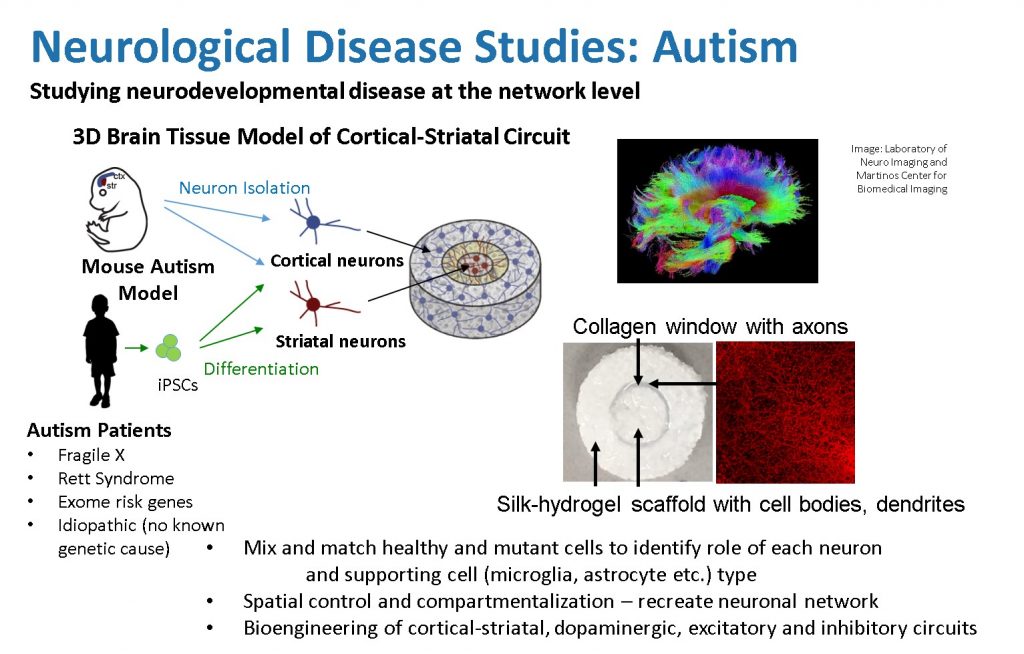
Using our 3D brain tissue models, we are able to examine dysfunction of the cortical-striatal circuit which has been implicated in several mouse models of Autism Spectrum Disorder. To study early molecular changes occurring in cortical and striatal neurons, we develop 3D cultures of those neuronal populations derived from APC cKO mouse model of ASD and control litter-mates. 3D engineered cultures provide compartmentalization of specific and identifiable structures to emulate native tissues and, thereby, provide insight into physiological functions. In parallel, we will use human iPSC/iNSC derived from ASD patients with known genetic defects. We differentiate iPSCs into cortical and striatal neurons, as well as supporting cell types, and reconstruct the human 3D in vitro cortical-striatal circuits and screen for potential changes in key signaling pathways, neuron differentiation and neuronal activities. This novel 3D brain tissue model of cortical and striatal regions serves as a powerful tool for identifying the underlying pathophysiological mechanisms of ASD, essential for defining targets and therapeutic strategies to ameliorate autism and its co-morbidities.